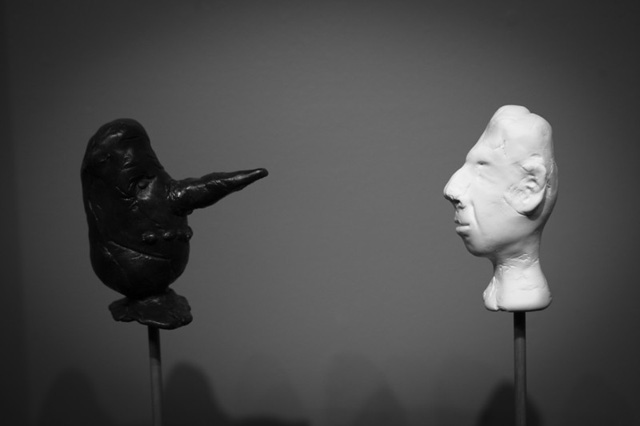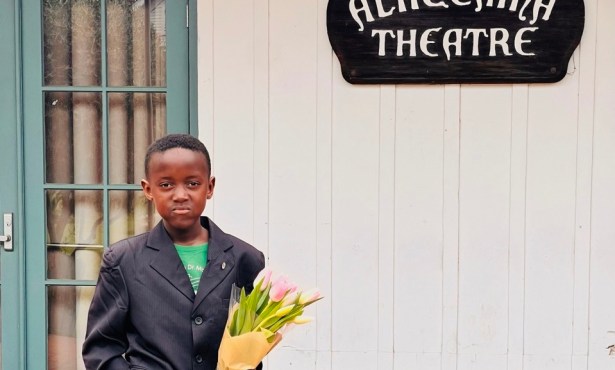Double Trouble at the Arts Fund
Exhibition of Art by Married Couples on Display Through January 14

Nancy Gifford, an artist and avid collector of contemporary art, has curated this show for The Arts Fund’s 10th anniversary based on a simple concept — artists who are life partners. The “double trouble” of the show’s title is an apt term for the collision of two egos in one slippery life raft of a relationship, but the art on display is anything but troubled. Rather than undermining each other like stereotypical sitcom couples, these artists display the mutual reinforcement and positivity of successful real-life partnerships. Each pair is rooted not only in the day-to-day constraints of living together, but also in the fertile soil of a shared mental space of aesthetic enlightenment. For Macduff Everton and Mary Heebner, that means frequent travel and exploration to places like Patagonia, the subject of their new book, Patagonia: La Última Esperanza (Tixcacalcupul Press, forthcoming February 2012). Everton is represented in this show by four of his astonishing wide-frame digital photographic prints, each of which commands a remarkable vista from the Patagonian countryside. Heebner tiles together multiple panels of silk-screened and hand-painted aluminum plates to create her “Sleeping Beauties –Wake, A-J.” In a nearby vitrine, there’s a copy of her extraordinary artist’s book, Unearthed, which delves into the archeology of the Patagonian region through printmaking and poetry.
For Kimberly Hahn and James Van Arsdale — the only couple in the show to actually collaborate on a single installation, the amazing “eyeComputerWorld” — the shared headspace occurs along the interstellar lo-ways of DIY and amid the emergent digital mindscape. The piece, which combines geometric abstraction with lights and texture, takes up a corner of the room and spills out onto the floor via a subtly psychedelic custom fragment of carpet.
Painters Jane Callister and Philip Argent share a medium — acrylic paint on canvas — and a destination, which is out of this world. Their vivid, painterly abstractions rely on heavy doses of hot color and sophisticated, collage-based ideas about form and negative space. Argent’s work in particular suggests a kind of emptied-out, post-digital combination of hard-edge abstraction and neo-color field exploration. It’s fantastic to see two gifted painters operating at such a high level together. They’re the Picasso and Braque of UCSB’s Art Department. Dane Goodman and Marie Schoeff, on the other hand, enjoy a similar fascination with the mysteries of scale and organic form, but they diverge in their choices of media, each finding their own way to make the visual field strange and new. For Schoeff, intimate-scale silverpoint drawings on paper unfold in unpredictable yet consistently unified figures. In Goodman’s sculpture, the forms take their cues from an arresting signature relation to the plinth, typically involving long vertical supports for relatively small objects. Goodman’s “Discuss,” a marvelous pair of sculpted heads mounted on the same base, captures the theme of Double Trouble perfectly. These are four great conversations in art, and like the relationships from which they spring, they just keep going.



